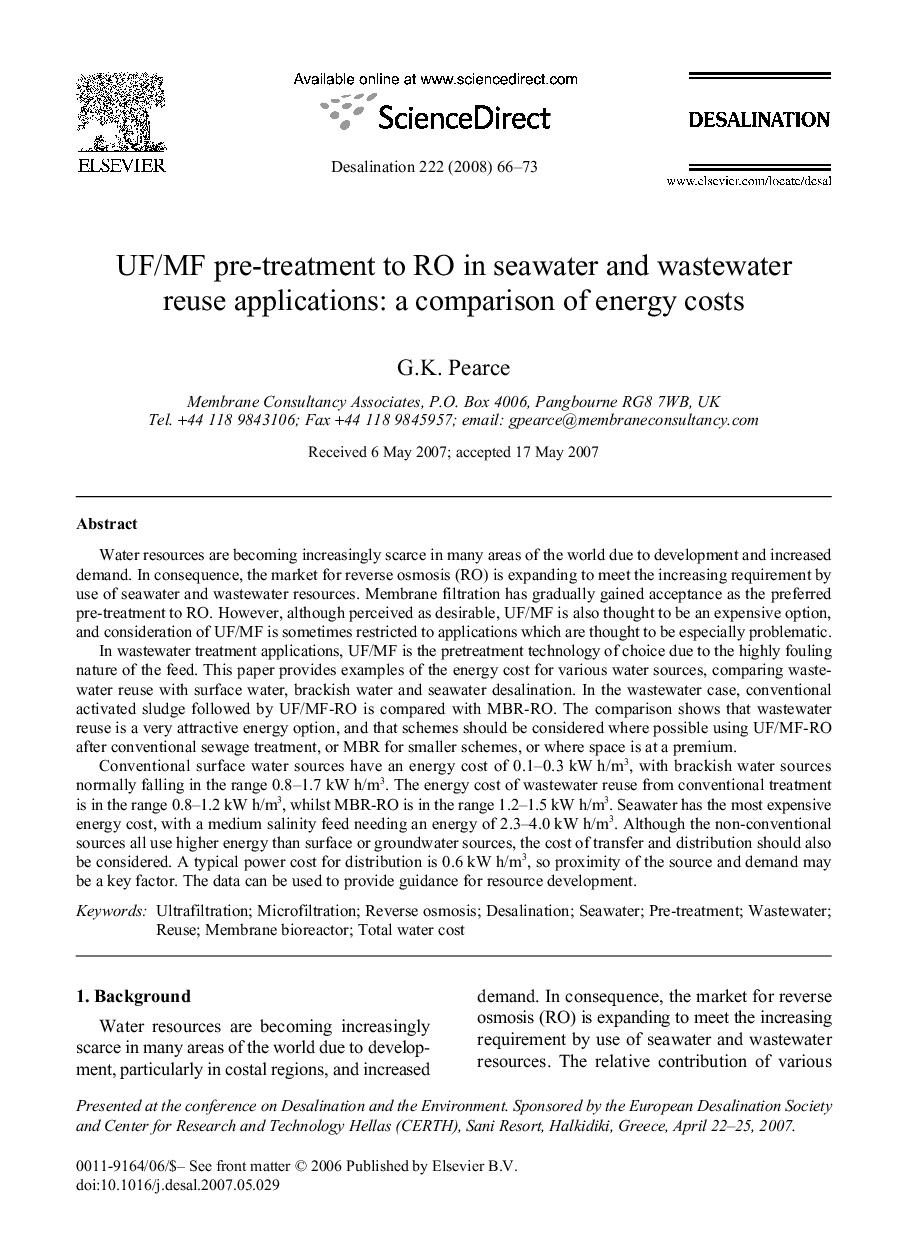| کد مقاله | کد نشریه | سال انتشار | مقاله انگلیسی | نسخه تمام متن |
|---|---|---|---|---|
| 627291 | 1455468 | 2008 | 8 صفحه PDF | دانلود رایگان |

Water resources are becoming increasingly scarce in many areas of the world due to development and increased demand. In consequence, the market for reverse osmosis (RO) is expanding to meet the increasing requirement by use of seawater and wastewater resources. Membrane filtration has gradually gained acceptance as the preferred pre-treatment to RO. However, although perceived as desirable, UF/MF is also thought to be an expensive option, and consideration of UF/MF is sometimes restricted to applications which are thought to be especially problematic.In wastewater treatment applications, UF/MF is the pretreatment technology of choice due to the highly fouling nature of the feed. This paper provides examples of the energy cost for various water sources, comparing wastewater reuse with surface water, brackish water and seawater desalination. In the wastewater case, conventional activated sludge followed by UF/MF-RO is compared with MBR-RO. The comparison shows that wastewater reuse is a very attractive energy option, and that schemes should be considered where possible using UF/MF-RO after conventional sewage treatment, or MBR for smaller schemes, or where space is at a premium.Conventional surface water sources have an energy cost of 0.1–0.3 kW h/m3, with brackish water sources normally falling in the range 0.8–1.7 kW h/m3. The energy cost of wastewater reuse from conventional treatment is in the range 0.8–1.2 kW h/m3, whilst MBR-RO is in the range 1.2–1.5 kW h/m3. Seawater has the most expensive energy cost, with a medium salinity feed needing an energy of 2.3–4.0 kW h/m3. Although the non-conventional sources all use higher energy than surface or groundwater sources, the cost of transfer and distribution should also be considered. A typical power cost for distribution is 0.6 kW h/m3, so proximity of the source and demand may be a key factor. The data can be used to provide guidance for resource development.
Journal: Desalination - Volume 222, Issues 1–3, 1 March 2008, Pages 66-73